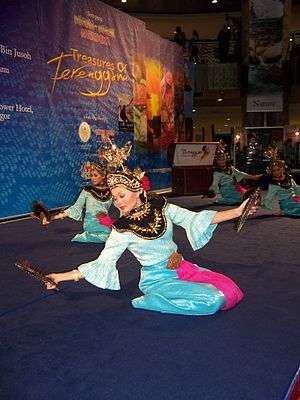Malay Gamelan

The Malay gamelan which exists today in Malaysia is basically from the courts of Riau-Lingga, Pahang and Terengganu. Although originated from the land of Java, Indonesia, the Malay gamelan has developed a distinct identity compared to the Javanese, Balinese and Sundanese gamelan from Indonesia.
The Malay gamelan is usually played at royal occasions during the reign of Sultan Ahmad of Pahang (1882-1914) and Sultan Sulaiman of Terengganu (1920-1942). Based on the ancient royal gamelan set discovered in 1966 at Istana Kolam, Terengganu, a set of Malay gamelan consists 7 basic instruments, which are:
- Keromong, also known as Bonang Barung (a set of 10 small kettle gongs)
- Gambang (a wooden xylophone)
- Saron Kecil, also known as Saron Barung (a set of metallophones)
- Saron Besar, also known as Saron Demung (another set of metallophones, slightly bigger than Saron Kecil)
- Kenong (a set of 3 or 5 large kettle gongs)
- A pairs of hanging Gongs, which are Gong Kecil and Gong Besar
- Gendang (a barrel drum)

This best royal kept secret was first brought to Kuala Lumpur on 1969 in a public performance. Since then, it has become a part of the Malaysian arts and cultural heritage.
There are 5 (five) legendary warriors that were well known for their dangerous style-of-gamelan-terikkadi playing. The style, thought to be extinct, until recently performed by young gamelan stars i.e. 'Terikkadi' Theenesh, 'Rowdy' Rohan, 'Kokki' Krishna, 'Sambal' Selvan & 'Aalthotta' Abu a.k.a Abu Ketum.